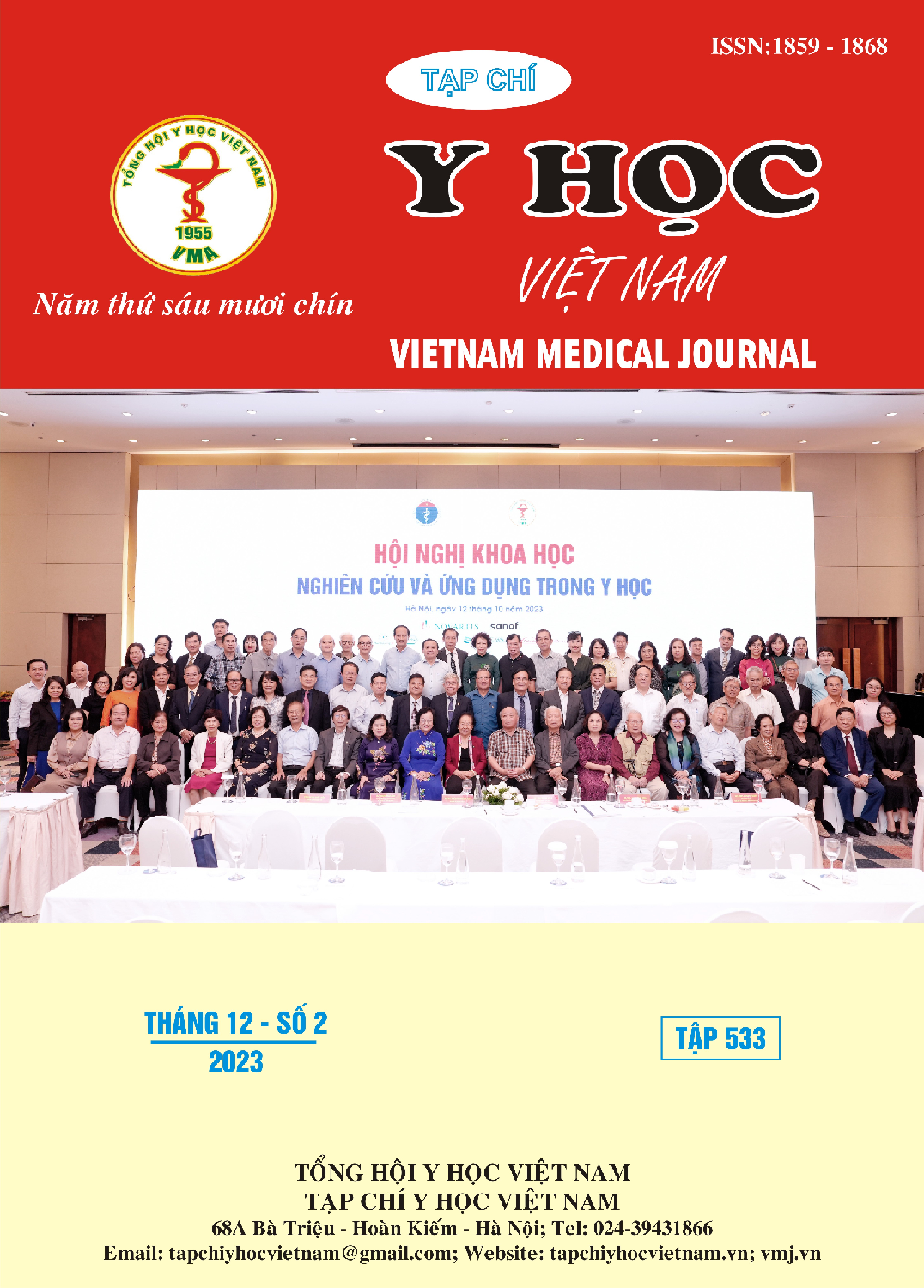EVALUATION OF THE RESULTS OF FROZEN EMBRYO TRANSFER USING THE TIMELAPSE TECHNOLOGY
Main Article Content
Abstract
Retrospective descriptive study on 280 patients with a total of 326 frozen embryo transfer cycles at Hanoi Obstetrics and Gynecology Hospital between October 2019 and May 2022. The results showed that there was a relationship between the average Kidscore and clinical pregnancy outcomes. In addition, the study also observed that the quality of the ICM and TE of embryos was statistically significantly related to pregnancy rate, clinical pregnancy rate and live birth rate. However, there is no statistically significant difference in the average time of pronucleus appearance, the first frame where both pronuclei faded, the timing of reaching the 2-, 3-, 4-, 5-, 6-, 7-, and 8-cell stage, and begining to hatch into the blastocyst cavity. Thus, the quality of the selected embryos has the quality of the ICM and TE of type A and B, giving high pregnancy results. Embryos with high KIDS scores correspond to high pregnancy rates. However, Kidscore is not a strong enough indicator to predict the possibility of pregnancy.
Article Details
References
2. Ai J., Jin L., Zheng Y. et al. (2021). The Morphology of Inner Cell Mass Is the Strongest Predictor of Live Birth After a Frozen-Thawed Single Embryo Transfer. Front Endocrinol, 12, 621221.
3. Fujiwara M., Takahashi K., Izuno M. et al. (2007). Effect of micro-environment maintenance on embryo culture after in-vitro fertilization: comparison of top-load mini incubator and conventional front-load incubator. J Assist Reprod Genet, 24(1), 5–9.
4. Gardner D.K., Lane M., Stevens J. et al. (2000). Blastocyst score affects implantation and pregnancy outcome: towards a single blastocyst transfer. Fertil Steril, 73(6), 1155–1158.
5. Kato K., Ueno S., Berntsen J. et al. (2021). Comparing prediction of ongoing pregnancy and live birth outcomes in patients with advanced and younger maternal age patients using KIDScoreTM day 5: a large-cohort retrospective study with single vitrified-warmed blastocyst transfer. Reprod Biol Endocrinol RBE, 19(1), 98.
6. Licht P., Russu V., and Wildt L. (2001). On the role of human chorionic gonadotropin (hCG) in the embryo-endometrial microenvironment: implications for differentiation and implantation. Semin Reprod Med, 19(1), 37–47.
7. Lundin K. and Park H. (2020). Time-lapse technology for embryo culture and selection. Ups J Med Sci, 125(2), 77–84.
8. Sivanantham S., Saravanan M., Sharma N. et al. (2022). Morphology of inner cell mass: a better predictive biomarker of blastocyst viability. PeerJ, 10, e13935.


